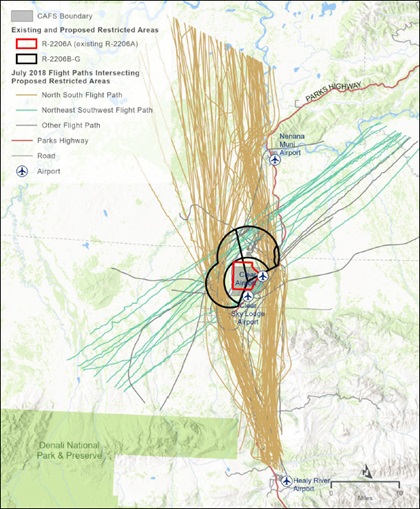Members urged to weigh in on Alaska radar plan
The Missile Defense Agency of the Department of Defense has released its draft environmental impact statement (EIS) for the Long Range Discrimination Radar (LRDR) facility located at Clear Air Force Station in Alaska, and is accepting public comments on the proposal —which includes a proposed major expansion of restricted airspace—until December 21.
The expansion and division of Restricted Area R-2206 adjacent to Clear Airport is needed to keep aircraft at a safe distance from the upgraded LRDR’s high-intensity emissions, the agency said.
“When the 2016 EA was developed, the operational concept for the LRDR was to maintain the LRDR in a readiness posture with limited operations, and no additional airspace restrictions were anticipated,” notes the draft environmental impact statement’s executive summary. Later, however, “the operational concept changed based on the emerging threats to the U.S., and a determination was made that LRDR was required to operate on a continuous basis.”

Although the proposal’s geographic extent and proposed intervals of activity have been modified based in part on comments submitted by AOPA and other aviation organizations during a prior scoping period on the plan, AOPA remains concerned that the airspace expansion could significantly affect aircraft flying in the vicinity of the LRDR, and those transiting the Windy Pass, a vital route that connects Fairbanks and Anchorage.
The LRDR is expected to begin operational testing in early 2021, with temporary flight restrictions being implemented as necessary until the permanent restricted areas proposed in the draft document as R-2206A through R-2206G take effect.
A separate FAA airspace notice of proposed rulemaking process is expected in the next few months to delineate the airspace that will be charted.
AOPA encourages members to review the draft EIS and submit comments by December 21 online, by email, or by mail to LRDR CAFS Draft EIS, C/O HDR, 2525 C Street, Suite 500, Anchorage, AK 99503.
Please also share a copy of your comments with AOPA. Two options for the public to receive additional information include an online open house available through December 21 and a telephone public meeting on December 2 from 4 to 6 p.m. Alaska time. To attend call 855-756-7520 and use Access Code 65743.


